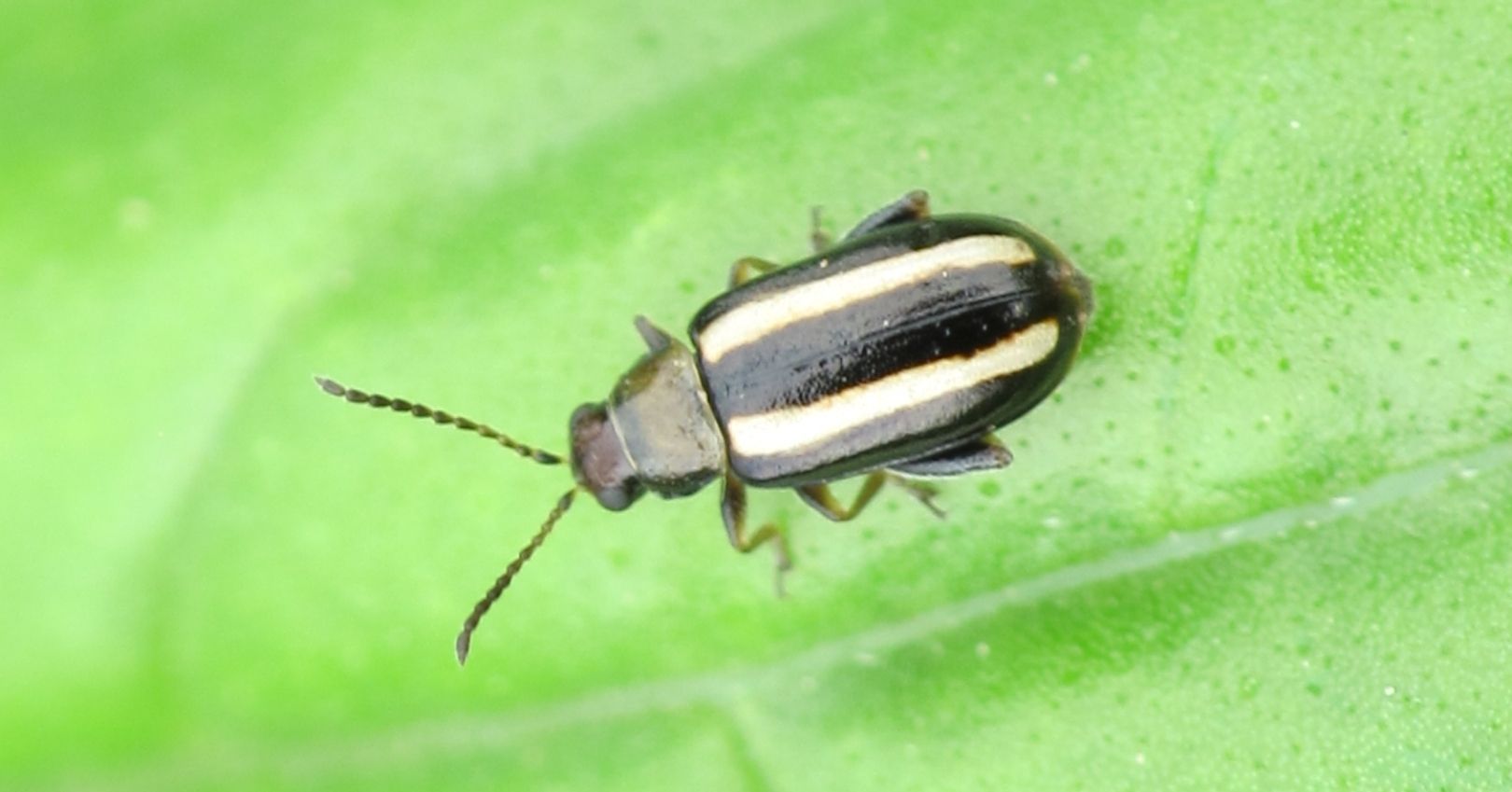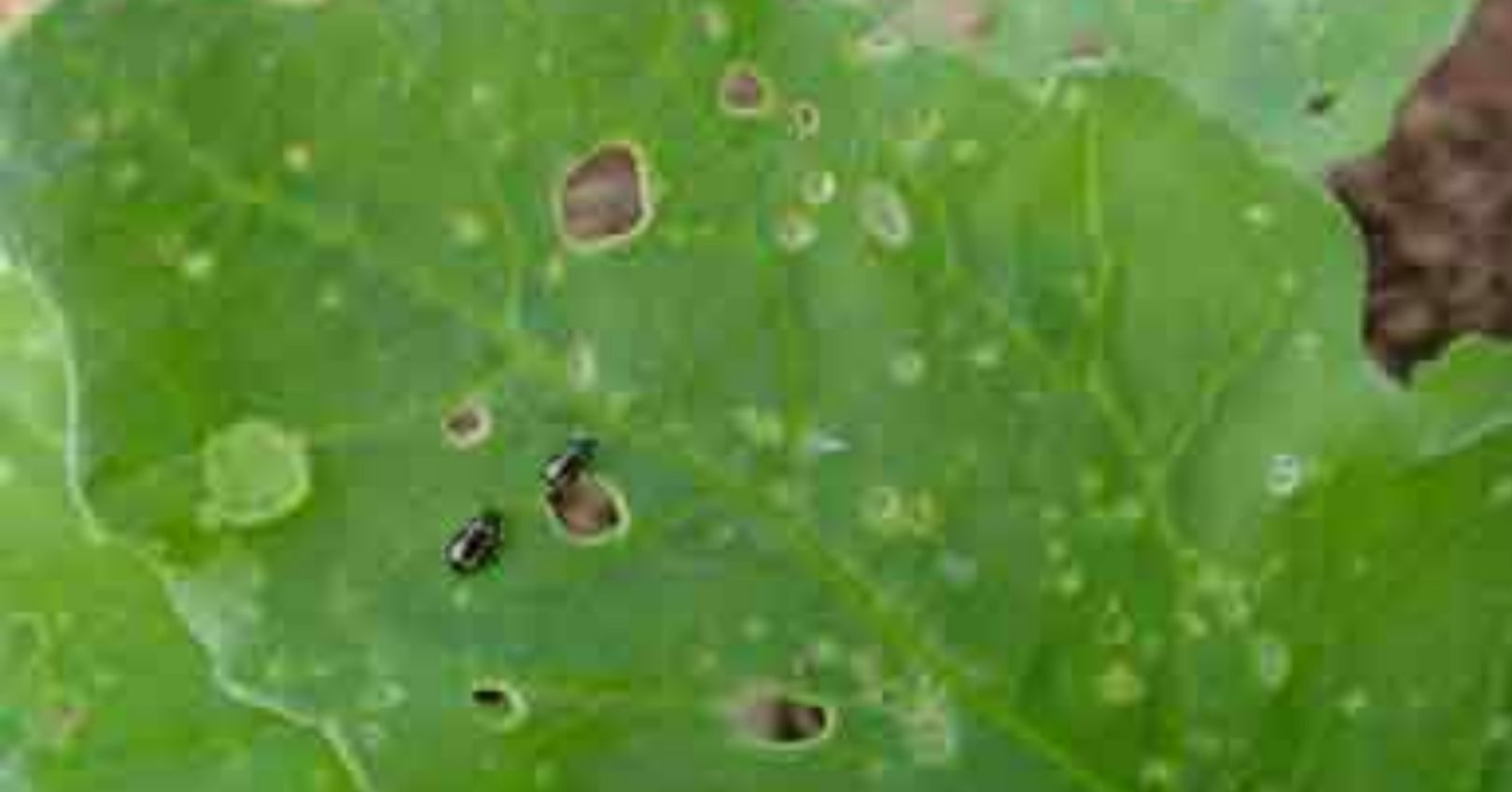Palestriped Flea Beetle


Description
Adult: 0.15 inches long, with broad white stripes along each brown wing. The hind legs are enlarged for jumping.
Egg: White-yellow and elliptical shaped. Larva: Small, white, and wormlike with a brown head, found exclusively in the soil.
Pupa: Small and cream-colored.
Life History
Overwinter as adults in areas protected by soil clods, weeds, or plant debris. They emerge mid-to-late spring, and mated females lay their eggs in the soil near the base of host plants. Once hatched, larvae move into the soil to feed on roots for about 18 days, followed by pupation in the soil. Up to 3 generations can occur each season. First generation adults during May through July and the second generation is active from mid-July until September
Damage
Adults are more destructive than larvae. They feed on the underside of foliage, leaving irregular-sized holes. Damage can be severe if populations are high, especially on young transplants. Larval feeding on the roots of carrots contribute to reduced yield. Other hosts include cole crops, edible greens, tomatoes, eggplants, peppers, beets, potatoes, melons, and various weed species.
Management
Cultural
- Site selection. Adult palestriped flea beetles migrate (or jump) into crops from nearby vegetation or weedy areas. Therefore, planting crops away from those refuge areas can reduce infestation.
- Trap crops. Plant a trap crop that is highly favored by flea beetles, such as cole crops or edible greens two weeks earlier than the main crop. Flea beetle adults are attracted to the earliest and then can be controlled.
- Floating row covers. Apply row covers in spring to prevent adults from laying their eggs.
Biological
Natural enemies of flea beetles include the parasitic wasp Microtonus vittatae, entomopathogenic nematodes, white muscadine (fungal pathogen), and generalist predators such as lacewing larvae, adult bigeyed bugs, and damsel bugs.

